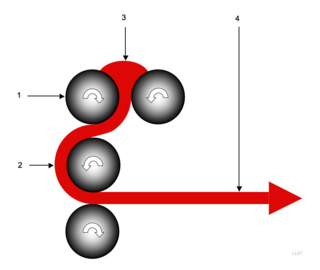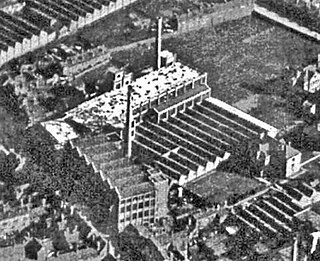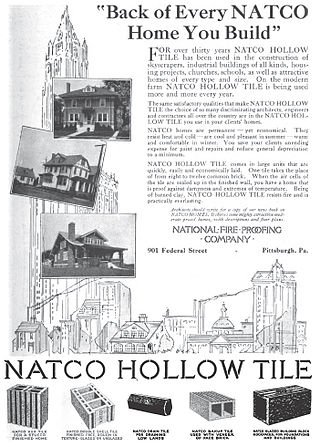A surfaced block is a concrete masonry unit with a durable, slick surface designed to provide resistance to frequent scrubbing and cleaning, graffiti, chemical exposure, moisture, impact, and abrasion.
A surfaced block is a concrete masonry unit with a durable, slick surface designed to provide resistance to frequent scrubbing and cleaning, graffiti, chemical exposure, moisture, impact, and abrasion.
Common types of surfaced blocks include glazed blocks, tile-faced blocks, sealed ground-face blocks, and polyurethane coated CMU.
Surfaced blocks are found primarily in areas where a sanitary environment is required. Food and Beverage manufacturing plants, hospitals, pharmaceutical manufacturing plants, restaurants, public facilities, and schools use this type of construction material.

A brick is a type of construction material used to build walls, pavements and other elements in masonry construction. Properly, the term brick denotes a unit primarily composed of clay, but is now also used informally to denote units made of other materials or other chemically cured construction blocks. Bricks can be joined using mortar, adhesives or by interlocking. Bricks are usually produced at brickworks in numerous classes, types, materials, and sizes which vary with region, and are produced in bulk quantities.
A lubricant is a substance that helps to reduce friction between surfaces in mutual contact, which ultimately reduces the heat generated when the surfaces move. It may also have the function of transmitting forces, transporting foreign particles, or heating or cooling the surfaces. The property of reducing friction is known as lubricity.

Masonry is the craft of building a structure with brick, stone, or similar material, including mortar plastering which are often laid in, bound and pasted together by mortar. The term masonry can also refer to the building units themselves.

Pottery is the process and the products of forming vessels and other objects with clay and other raw materials, which are fired at high temperatures to give them a hard and durable form. The place where such wares are made by a potter is also called a pottery. The definition of pottery, used by the ASTM International, is "all fired ceramic wares that contain clay when formed, except technical, structural, and refractory products". End applications include tableware, decorative ware, sanitary ware, and in technology and industry such as electrical insulators and laboratory ware. In art history and archaeology, especially of ancient and prehistoric periods, pottery often means vessels only, and sculpted figurines of the same material are called terracottas.

Delftware or Delft pottery, also known as Delft Blue or as delf, is a general term now used for Dutch tin-glazed earthenware, a form of faience. Most of it is blue and white pottery, and the city of Delft in the Netherlands was the major centre of production, but the term covers wares with other colours, and made elsewhere. It is also used for similar pottery, English delftware.

Porcelain is a ceramic material made by heating raw materials, generally including kaolinite, in a kiln to temperatures between 1,200 and 1,400 °C. The greater strength and translucence of porcelain, relative to other types of pottery, arise mainly from vitrification and the formation of the mineral mullite within the body at these high temperatures. End applications include tableware, decorative ware such as figurines, toilets and washbasins, and products in technology and industry such as electrical insulators and laboratory ware.

Tiles are usually thin, square or rectangular coverings manufactured from hard-wearing material such as ceramic, stone, metal, baked clay, or even glass. They are generally fixed in place in an array to cover roofs, floors, walls, edges, or other objects such as tabletops. Alternatively, tile can sometimes refer to similar units made from lightweight materials such as perlite, wood, and mineral wool, typically used for wall and ceiling applications. In another sense, a tile is a construction tile or similar object, such as rectangular counters used in playing games. The word is derived from the French word tuile, which is, in turn, from the Latin word tegula, meaning a roof tile composed of fired clay.

Glass brick, also known as glass block, is an architectural element made from glass. The appearance of glass blocks can vary in color, size, texture and form. Glass bricks provide visual obscuration while admitting light. The modern glass block was developed from pre-existing prism lighting principles in the early 1900s to provide natural light in manufacturing plants. Today glass blocks are used in walls, skylights, and sidewalk lights.

A calender is a series of hard pressure rollers used to finish or smooth a sheet of material such as paper, textiles, rubber, or plastics. Calender rolls are also used to form some types of plastic films and to apply coatings. Some calender rolls are heated or cooled as needed. Calenders are sometimes misspelled calendars.

Biscuit porcelain, bisque porcelain or bisque is unglazed, white porcelain treated as a final product, with a matte appearance and texture to the touch. It has been widely used in European pottery, mainly for sculptural and decorative objects that are not tableware and so do not need a glaze for protection.

Porcelain tiles or ceramic tiles are either tiles made of porcelain, or relatively tough ceramic tiles made with a variety of materials and methods, that are suitable for use as floor tiles, or for walls. They have a low water absorption rate, generally less than 0.5 percent. The clay used to build porcelain tiles is generally denser than ceramic tiles. They can either be glazed or unglazed. Porcelain tiles are one type of vitrified tiles and are sometimes referred to as porcelain vitrified tiles.

Egyptian faience is a sintered-quartz ceramic material from Ancient Egypt. The sintering process "covered [the material] with a true vitreous coating" as the quartz underwent vitrification, creating a bright lustre of various colours "usually in a transparent blue or green isotropic glass". Its name in the Ancient Egyptian language was tjehenet, and modern archeological terms for it include sintered quartz, glazed frit, and glazed composition. Tjehenet is distinct from the crystalline pigment Egyptian blue, for which it has sometimes incorrectly been used as a synonym.

Architectural terracotta refers to a fired mixture of clay and water that can be used in a non-structural, semi-structural, or structural capacity on the exterior or interior of a building. Terracotta pottery, as earthenware is called when not used for vessels, is an ancient building material that translates from Latin as "baked earth". Some architectural terracotta is actually stronger than stoneware. It can be unglazed, painted, slip glazed, or glazed.

Ceramic glaze, or simply glaze, is a glassy coating on ceramics. It is used for decoration, to ensure the item is impermeable to liquids and to minimise the adherence of pollutants.

Proto-celadon was a type of Chinese ceramic which developed during the Shang and Jin periods. It is often described as "proto-porcelain", and was usually glazed in light yellowish green.

Glazing, which derives from the Middle English for 'glass', is a part of a wall or window, made of glass. Glazing also describes the work done by a professional "glazier". Glazing is also less commonly used to describe the insertion of ophthalmic lenses into an eyeglass frame.

A saw-tooth roof is a roof comprising a series of ridges with dual pitches either side. The steeper surfaces are glazed to admit daylight and face away from the equator to shield workers and machinery from direct sunlight. This kind of roof admits natural light into a deep plan building or factory. It was therefore most commonly built during the Machine Age from the mid-nineteenth century to the mid-twentieth, when electrification of factories was not yet common.

Structural clay tile describes a category of burned-clay building materials used to construct roofing, walls, and flooring for structural and non-structural purposes, especially in fireproofing applications. Also called building tile, structural terra cotta, hollow tile, saltillo tile, and clay block, the material is an extruded clay shape with substantial depth that allows it to be laid in the same manner as other clay or concrete masonry. In North America it was chiefly used during the late 19th and early 20th centuries, reaching peak popularity at the turn of the century and declining around the 1950s. Structural clay tile grew in popularity in the end of the nineteenth-century because it could be constructed faster, was lighter, and required simpler flat falsework than earlier brick vaulting construction.

China painting, or porcelain painting, is the decoration of glazed porcelain objects such as plates, bowls, vases or statues. The body of the object may be hard-paste porcelain, developed in China in the 7th or 8th century, or soft-paste porcelain, developed in 18th-century Europe. The broader term ceramic painting includes painted decoration on lead-glazed earthenware such as creamware or tin-glazed pottery such as maiolica or faience.

Surrey whiteware or Surrey white ware, is a type of lead-glazed pottery produced in England from the 13th to the 16th centuries. The white-fired sandy earthenware was produced largely from kilns in Surrey and along the Surrey-Hampshire border. Surrey whitewares were the most commonly used pottery in London during the late medieval period. There are four classes of Surrey whiteware: Kingston-type, Coarse Border ware, Cheam whiteware and Tudor Green ware.